These gorgeous photographs of polar bears were all taken in Wapusk National Park by Daisy Gilardini, a conservation photographer who specializes in the Polar Regions, with a particular emphasis on Antarctic wildlife and North American bears.
Wapusk means ‘white bear’ in the local Cree language. Established in 1996, the national park protects 11,475km2 and extends around Hudson Bay through a transitional region of boreal forest and subarctic tundra. It’s an incredibly rich habitat for both resident and migratory species, home to Arctic foxes and hares, wolves, caribou and wolverines, alongside more than 200 bird species. However, with global temperatures rising, the future of this snowy kingdom remains uncertain.
Having spent the summer fasting on land, a polar bear (above) waits for the sea-ice to form so it can return to its usual business of hunting seals. Polar bears lead largely solitary lives, but in October and November they congregate on the shores of Hudson Bay as the deep freeze gets underway.
About Daisy Gilardini
Daisy is from Switzerland originally, and is now based in Vancouver, Canada. She took the majority of these shots in Wapusk
Wildlife photographer Daisy Gilardini on her polar bear photography portfolio. Please note that external videos may contain ads.
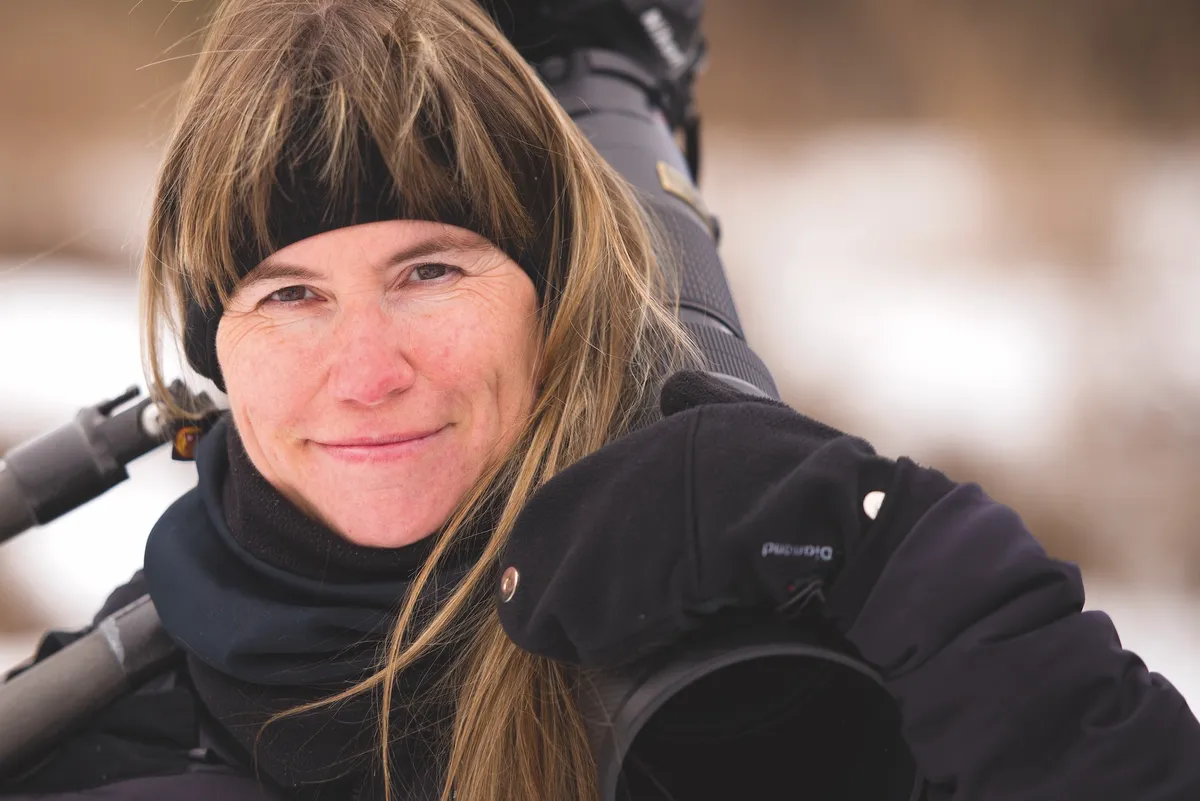
A conservation photographer based in Canada, Daisy specialises in polar wildlife and has embarked on more than 80 expeditions to the Arctic and Antarctic. Mosts of the images here were taken over several seasons in Wapusk National Park, Manitoba, Canada.
To view the images as a slideshow, click on the arrows in the top right hand corner of the photos below.
Playing at –40ºC
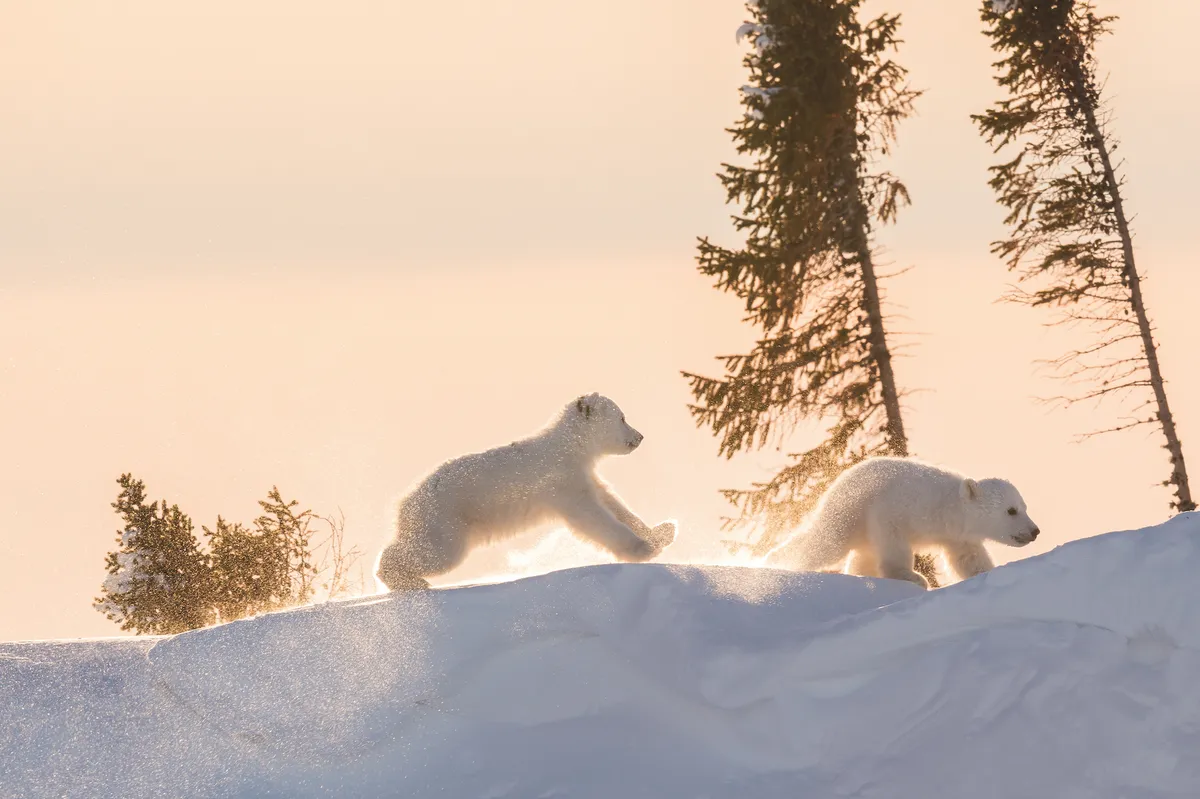
While most bears head out onto the sea-ice in winter, pregnant females stay in maternity dens on land, giving birth in December. At the age of about three months, the cubs emerge and frolic out in the open. They don’t seem to mind the cold, even when temperatures plummet to as low as -40°C. Exercise is a vital means of building resistance and strength in preparation for the challenges that lie ahead.
Play fighting
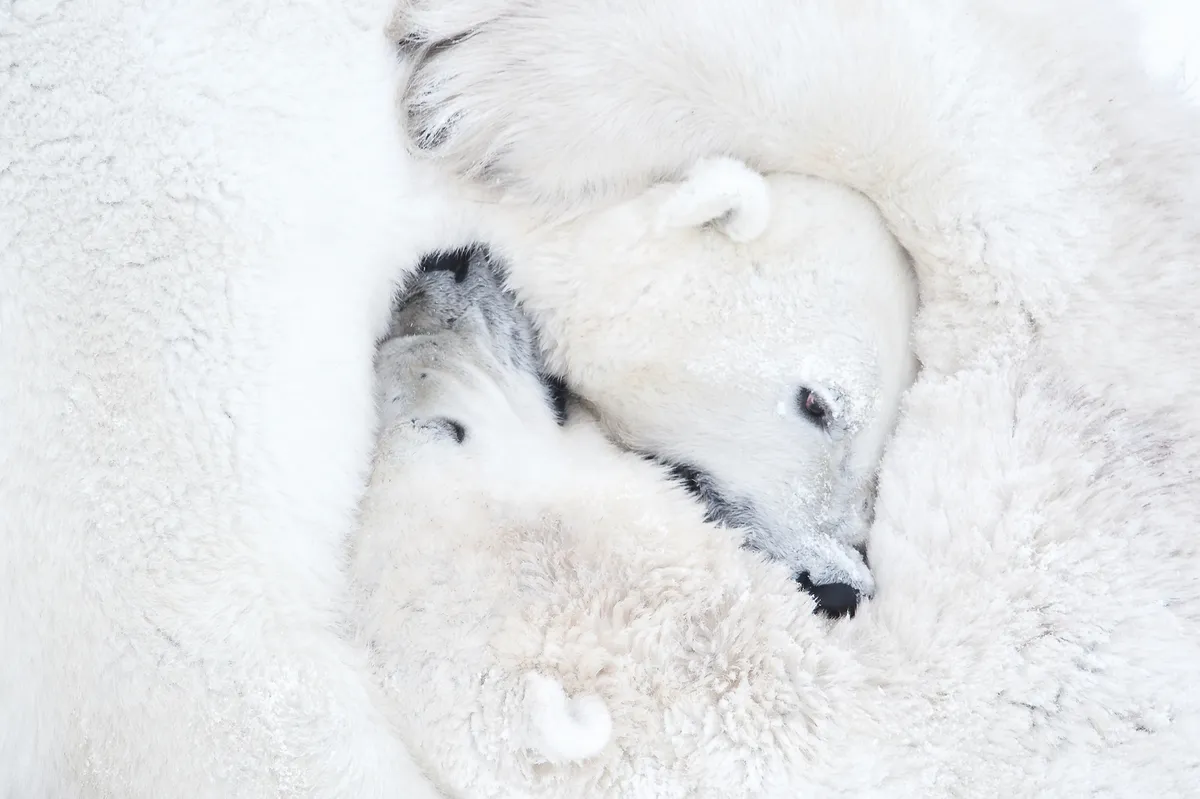
Two young males engage in a bout of boisterous sparring. Play-fighting is normal behaviour, serving as practice for the more serious standoffs that frequently break out during the mating season.
Polar bears are a Vulnerable species
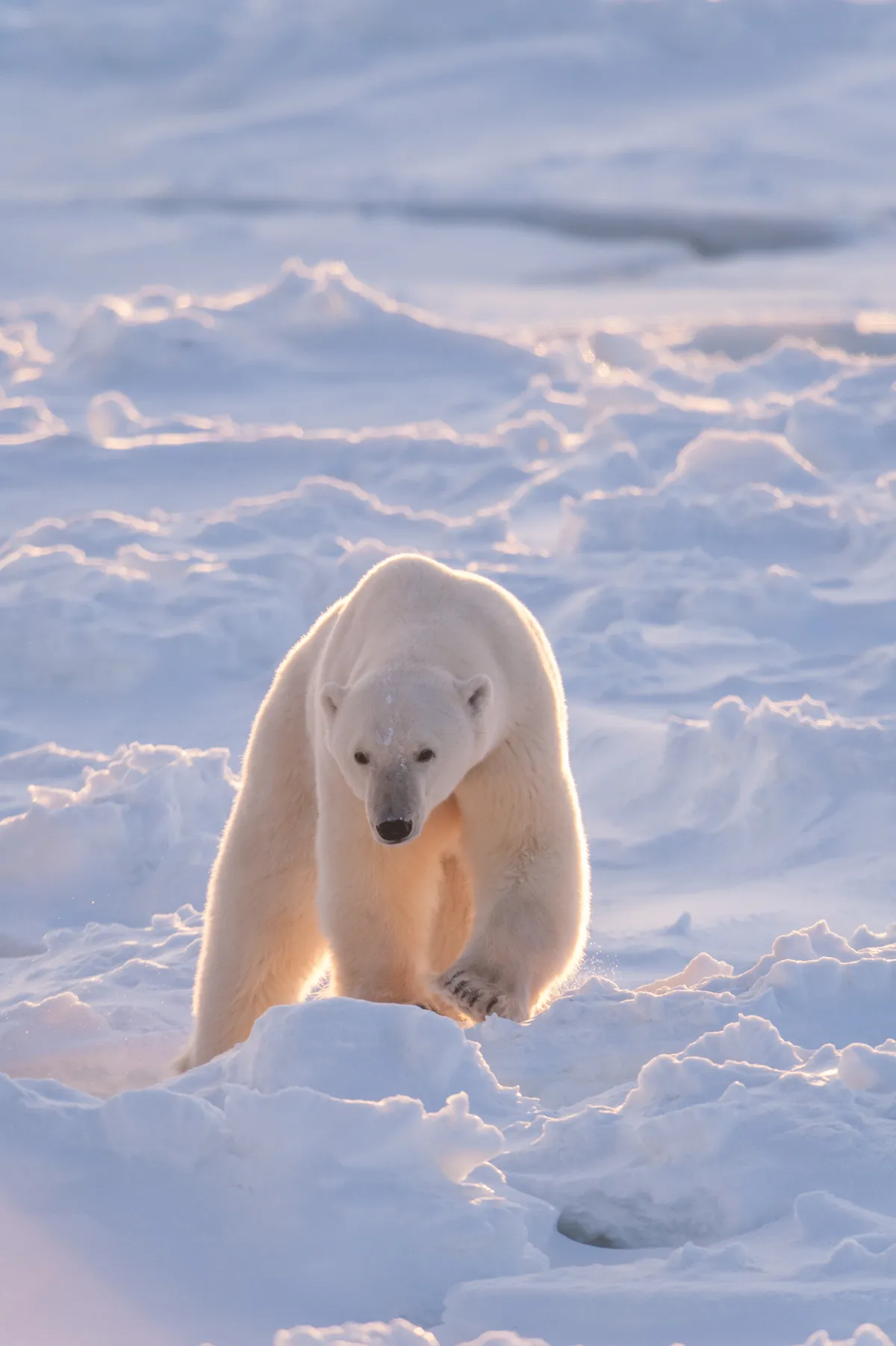
The polar bear is classified as Vulnerable by the IUCN. The worldwide population is estimated to be between 22,000 and 31,000 individuals, of which 60 to 80 per cent live in Canada. Population estimates are difficult and costly to determine, owing to the species’ low density, the expanse of its territory and remoteness of its habitat. Climate change is deemed the primary threat to polar bears, but hunting is also a major concern: up to four per cent of the total population is killed by humans each year. Some 600 official hunting tags are licensed annually in Canada to native Inuit hunters, which can be sold on to trophy hunters for tens of thousands of dollars.
Bears play-fighting
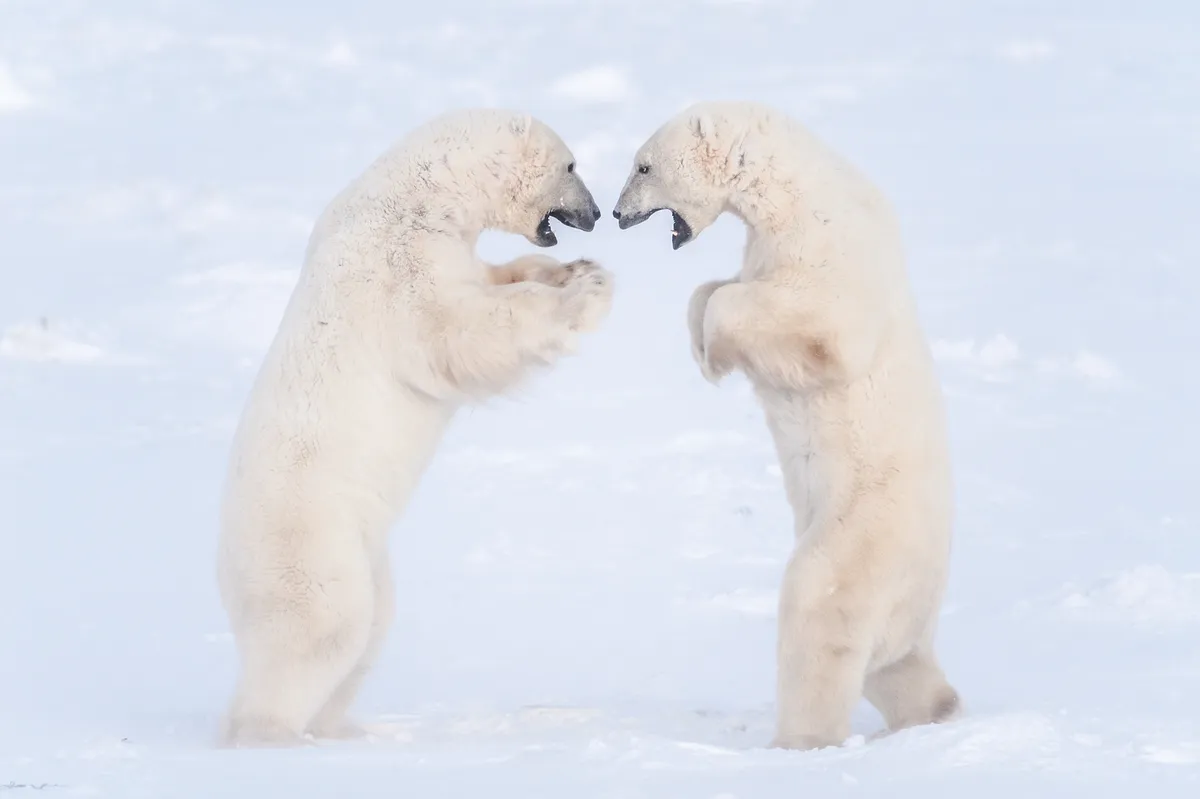
A polar bear on its hind legs is a formidable sight – which isn’t surprising, as these are the largest land carnivores on Earth. Subadults often rear up during play-fights, which are common during the long days waiting for the sea to freeze.
Bears fast in the summer
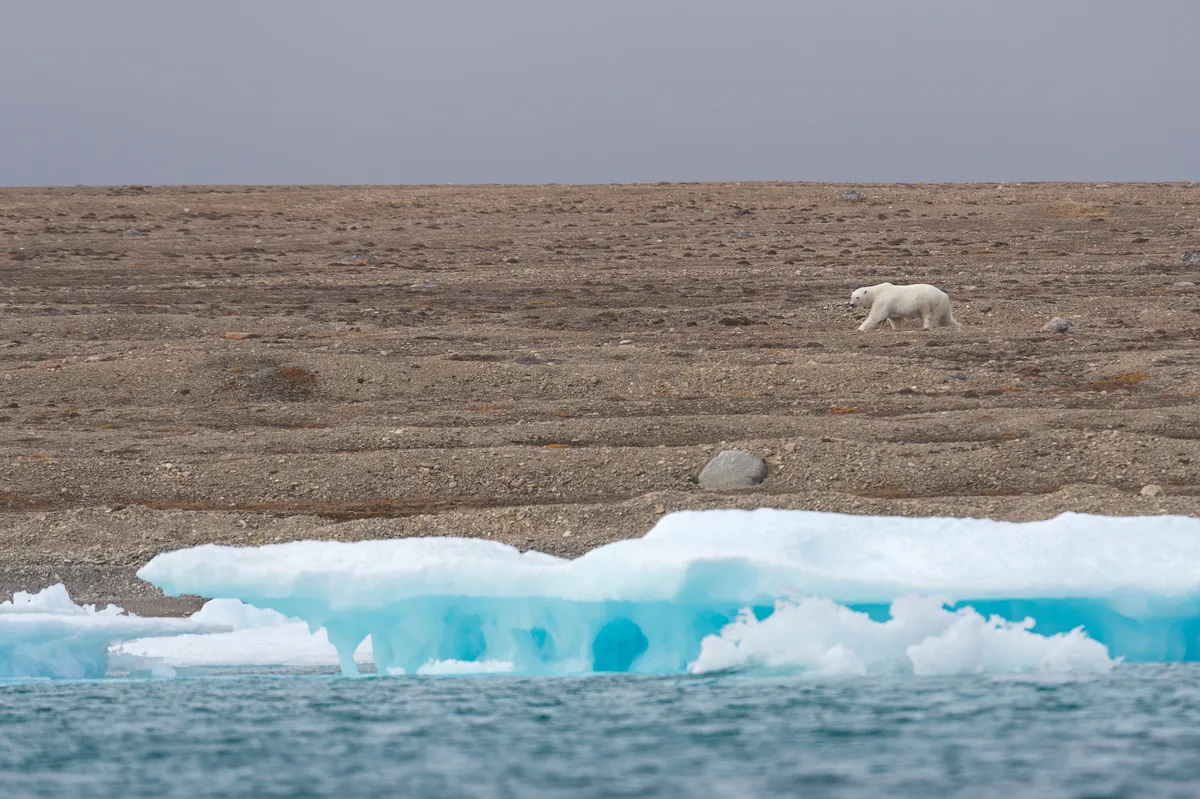
A bear wanders the shoreline, not in Wapusk, but on Somerset Island in the sparsely populated territory of Nunavut, in northern Canada. Scientists have identified 19 subpopulations of bears across the sea-ice of the circumpolar Arctic. Many alternate between a winter feast on the sea-ice and a summer fast on land, during which they subsist mainly on birds’ eggs and kelp, plus the occasional whale carcass.
Polar bear family photo
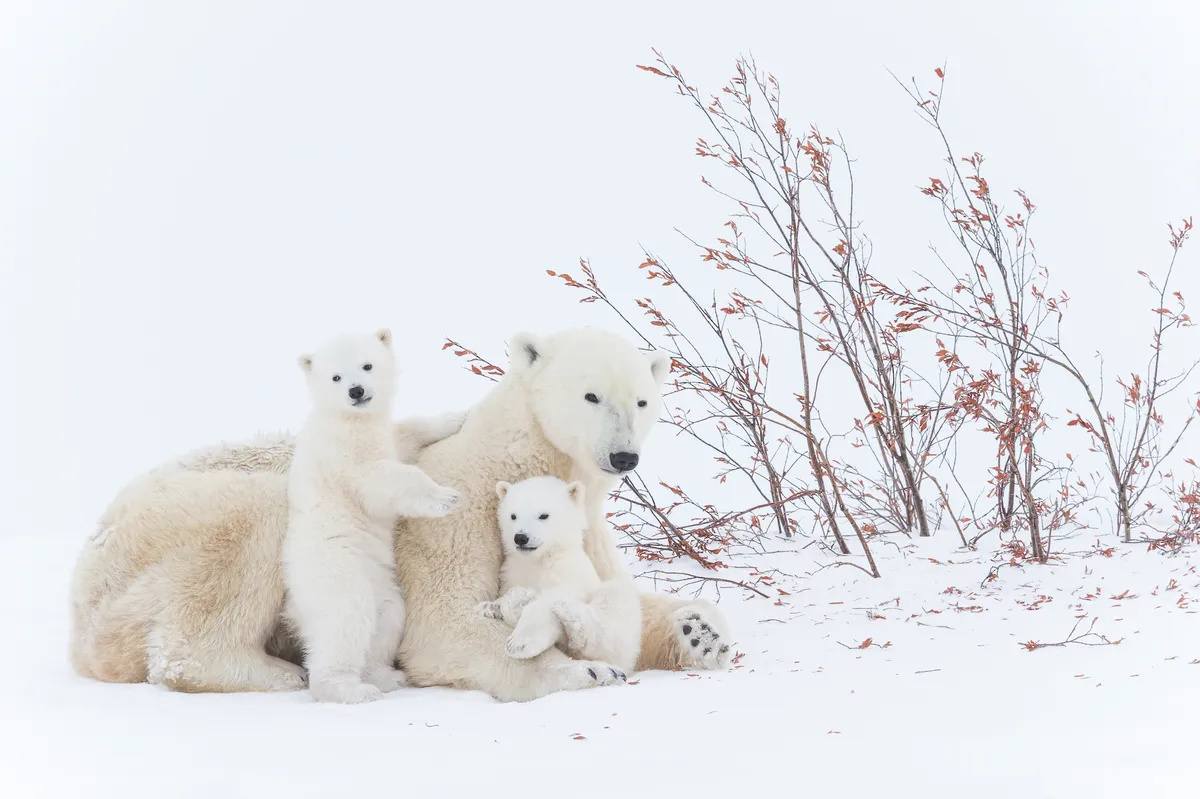
Daisy tracked this family in a snow van for hours, in temperatures of -50C. Despite a near whiteout, she spotted the trio resting close to a willow outcrop. “I then had to expose myself to the same elements as the bears,” she says. “The cold is mind-numbing and soul-penetrating. You must protect every inch of skin against frostbite, and wear a mask to breathe, or your lungs could collapse.”
Bear cub hunts a vole
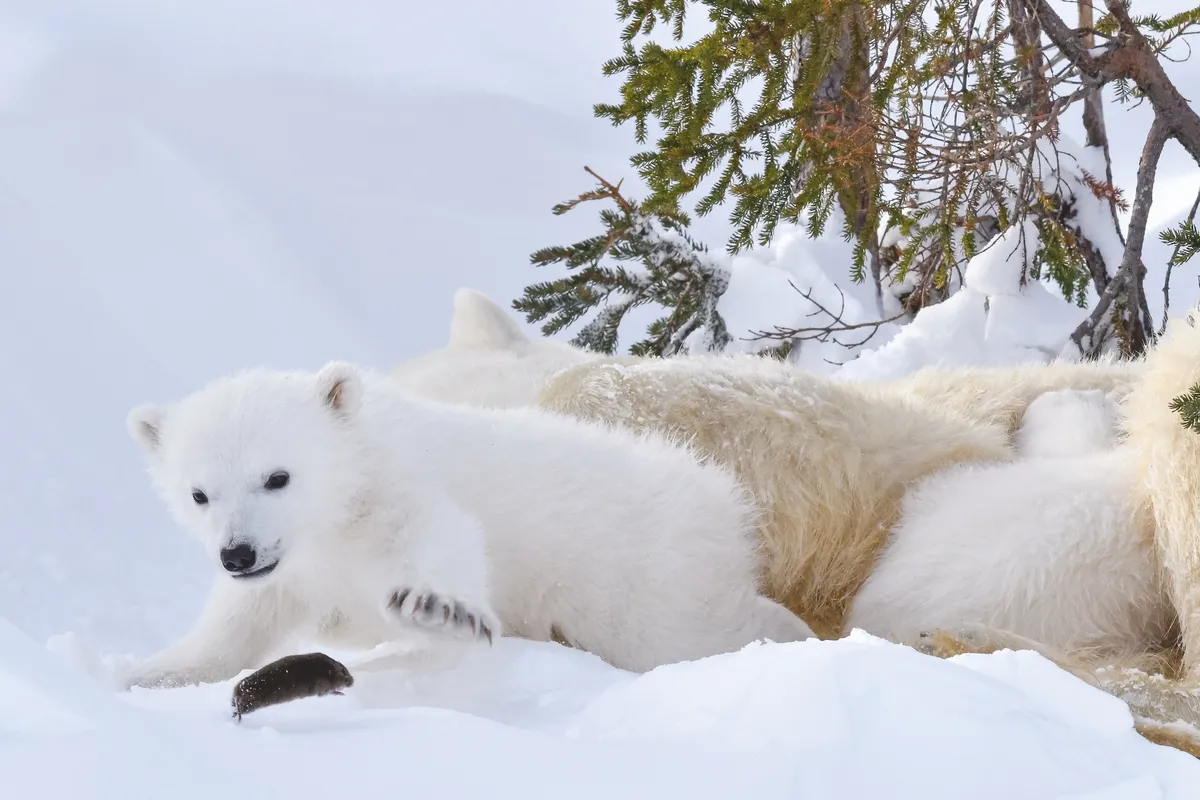
A vole scuttles out from under the snow to investigate a polar bear family. “One of the cubs immediately engaged with it,” recalls Daisy. “The vole escaped its swiping paw, only to be seized in the mother’s unforgiving jaws.”
Adapted to life in the freezer
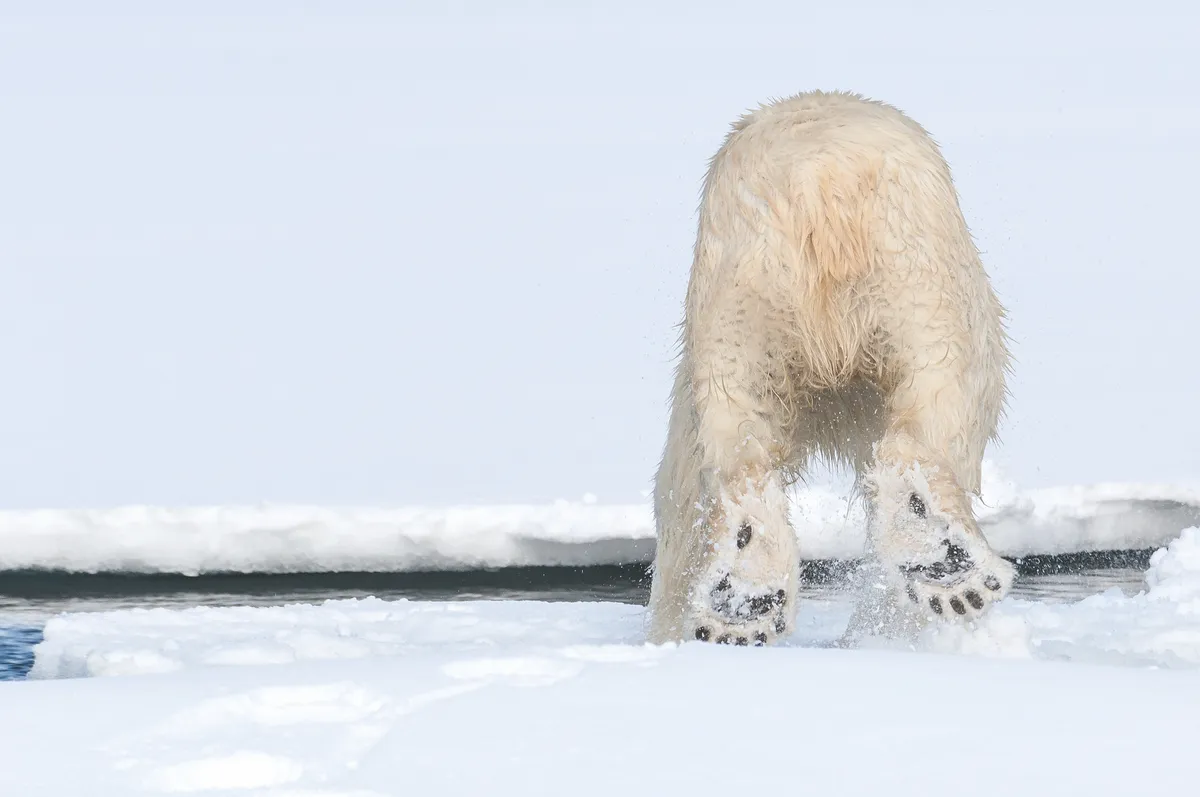
Polar bears are superbly adapted to life in the cold. They are equipped with two layers of fur (one of which comprises insulative hollow hairs), black skin to absorb heat and a thick layer of fat. While their ears and tails are small to mitigate heat loss, their paws are huge, allowing them to distribute their weight when walking on thin ice. Their feet pads are covered in tiny bumps known as papillae, which, with their claws, act like crampons.
Tracking polar bears
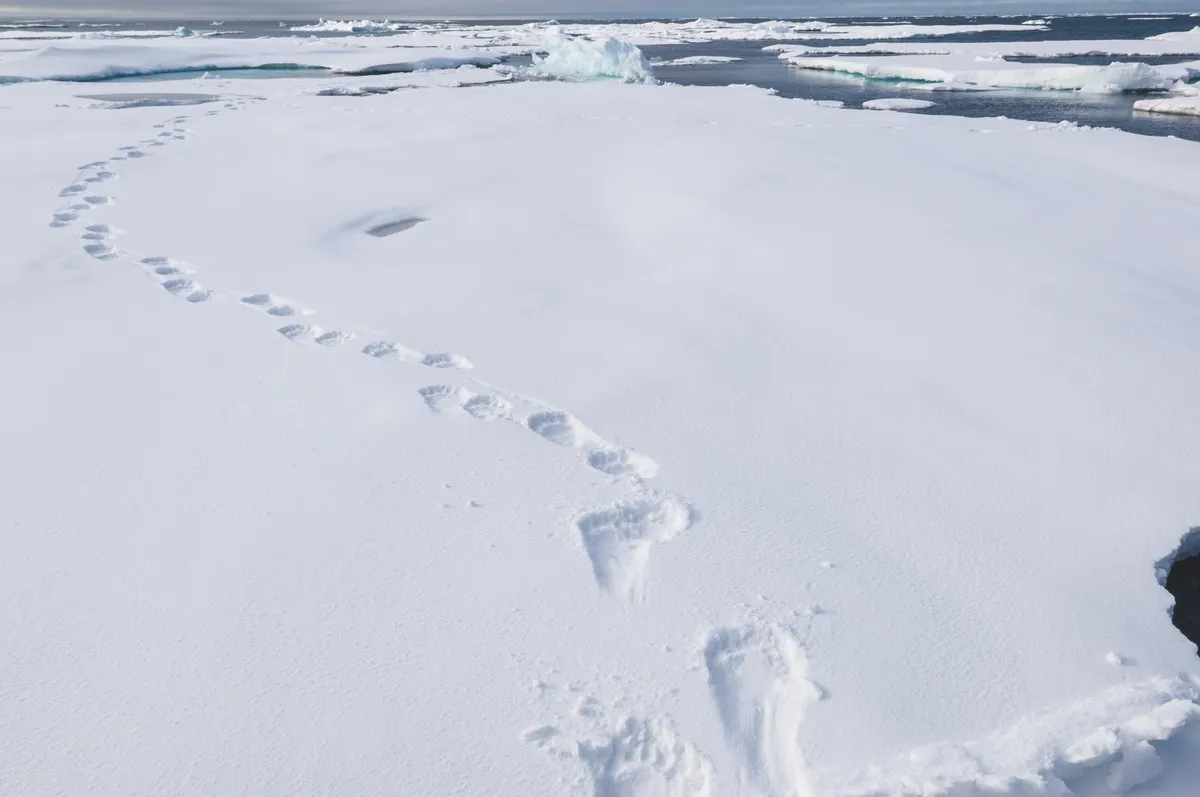
Prints in the snow are one way to track polar bears. Only females can be fitted with radio collars; the males’ necks are wider than their heads, so the devices fall off. Scientists are trialling a glue that will enable small trackers to be attached to a bear’s fur. The technology would be a cheaper alternative to radio collars, and provide valuable data on male bears.
Vanishing Arctic sea-ice
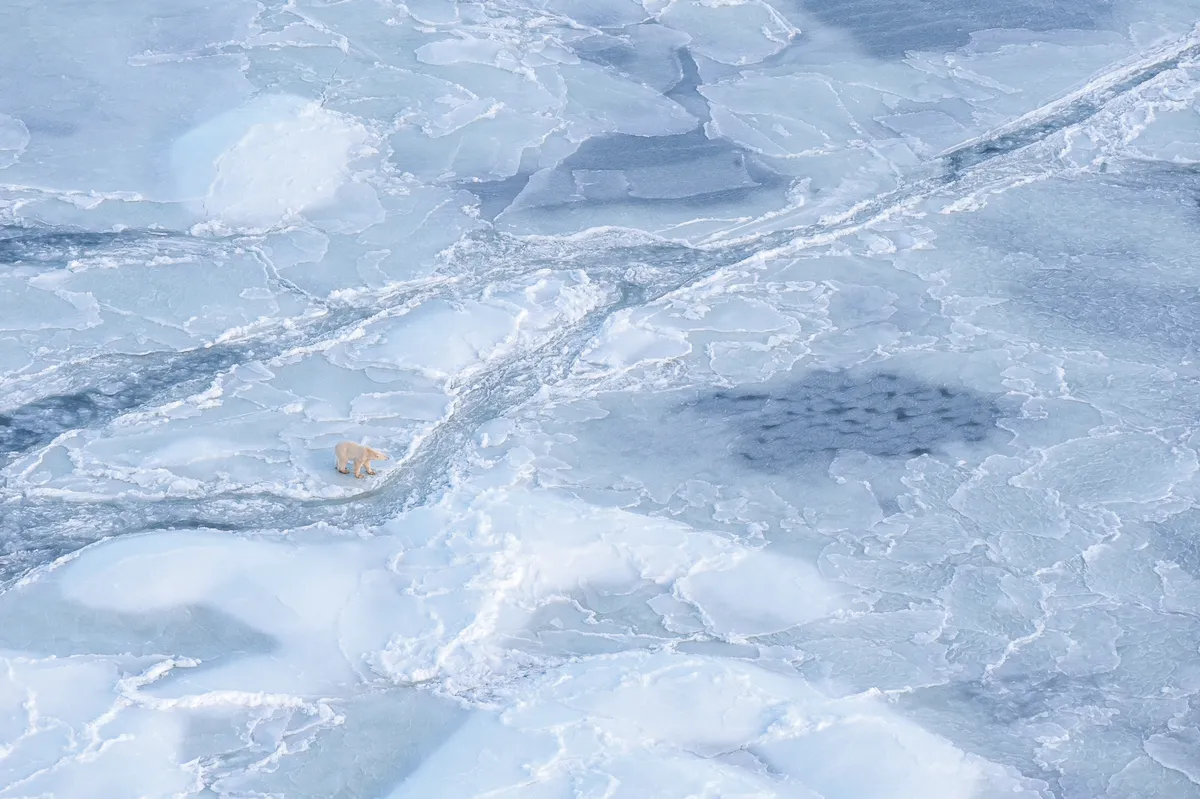
During the past 36 years, more than 40 per cent of the Arctic sea-ice has vanished. The ice is forming later and melting earlier, giving polar bears less time to build up the fat reserves they need to survive the leaner summer months.
Cubs leave the den
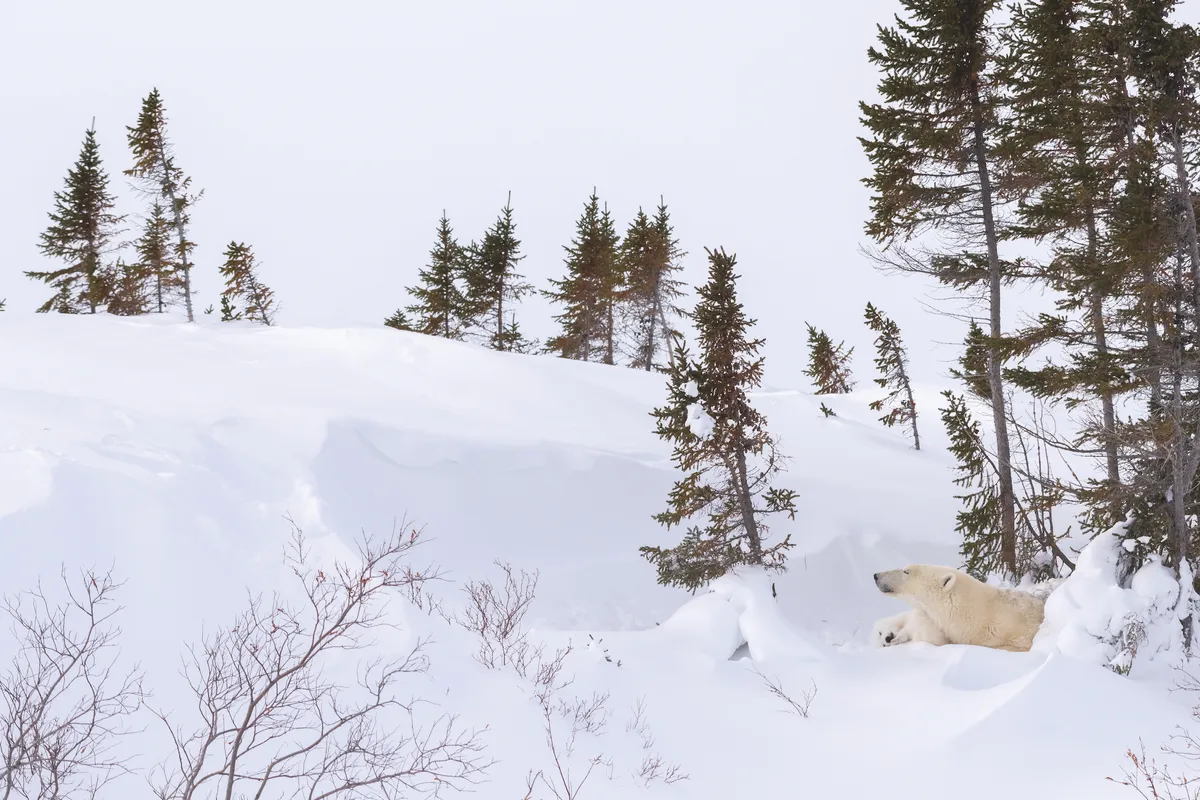
Cubs leave the den in March or April, but need time to transition to the outside world. They spend several days getting used to the cold, exploring their new surroundings and preparing for the long trek to the sea-ice. Once en route, the family periodically stops to rest, the female digging a ‘day den’ or seeking shelter among the vegetation.
Cubs with their mother
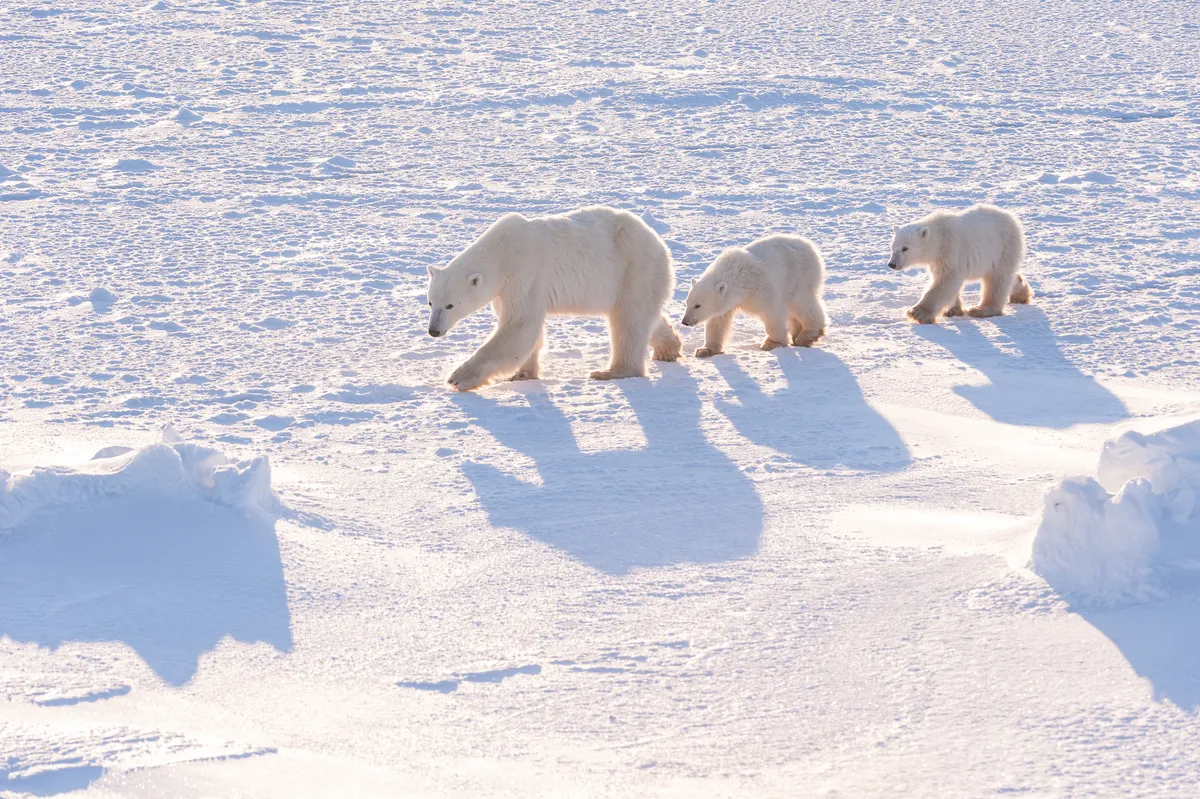
Cubs stay with their mother until the age of two and a half to three years old, with females nursing the youngsters for at least 18 months. Family bonds are strong: walking, playing, chasing, wrestling, cuddling and napping together are all part of daily life.
Staying close to Mum
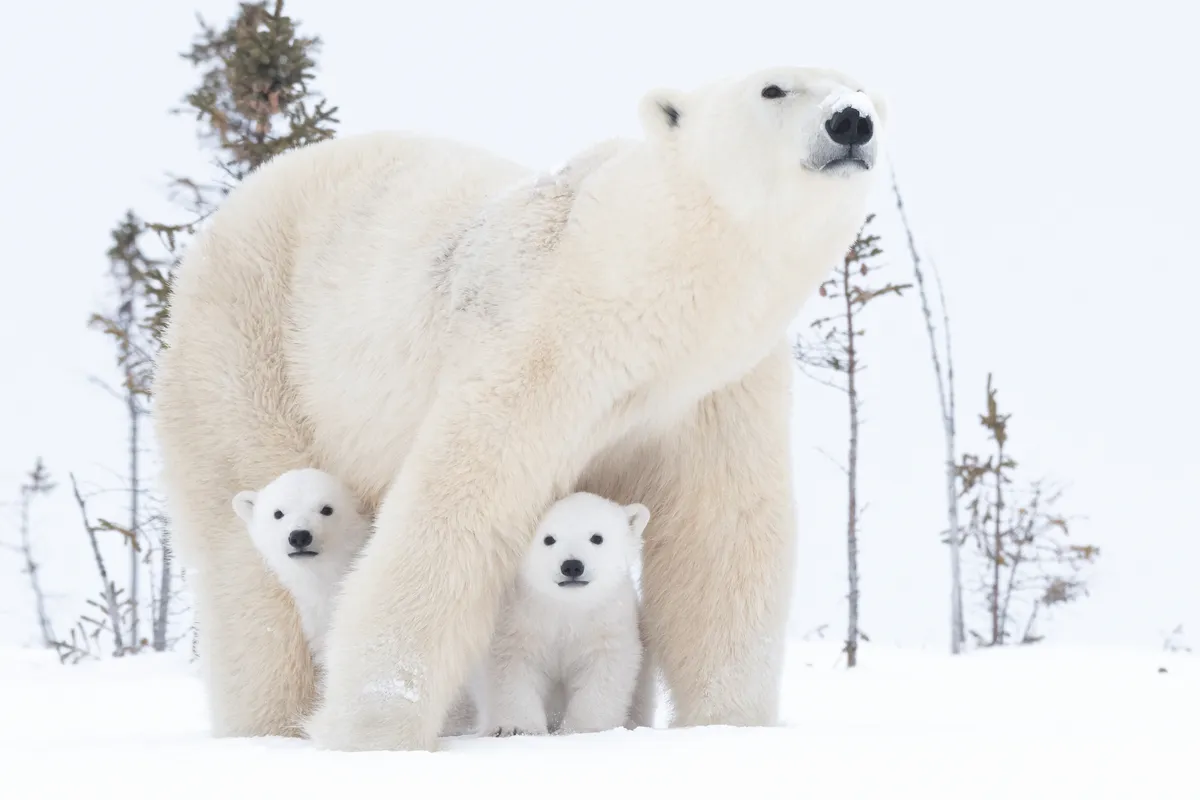
During the first weeks outside the den, polar bear cubs are wary, spending a lot of time close to the protective form of their mother. It pays to stay close: mortality is high during the first year of life. A typical female has five or six litters during her lifetime, of which two in three cubs die within their first 24 months.
A warming world
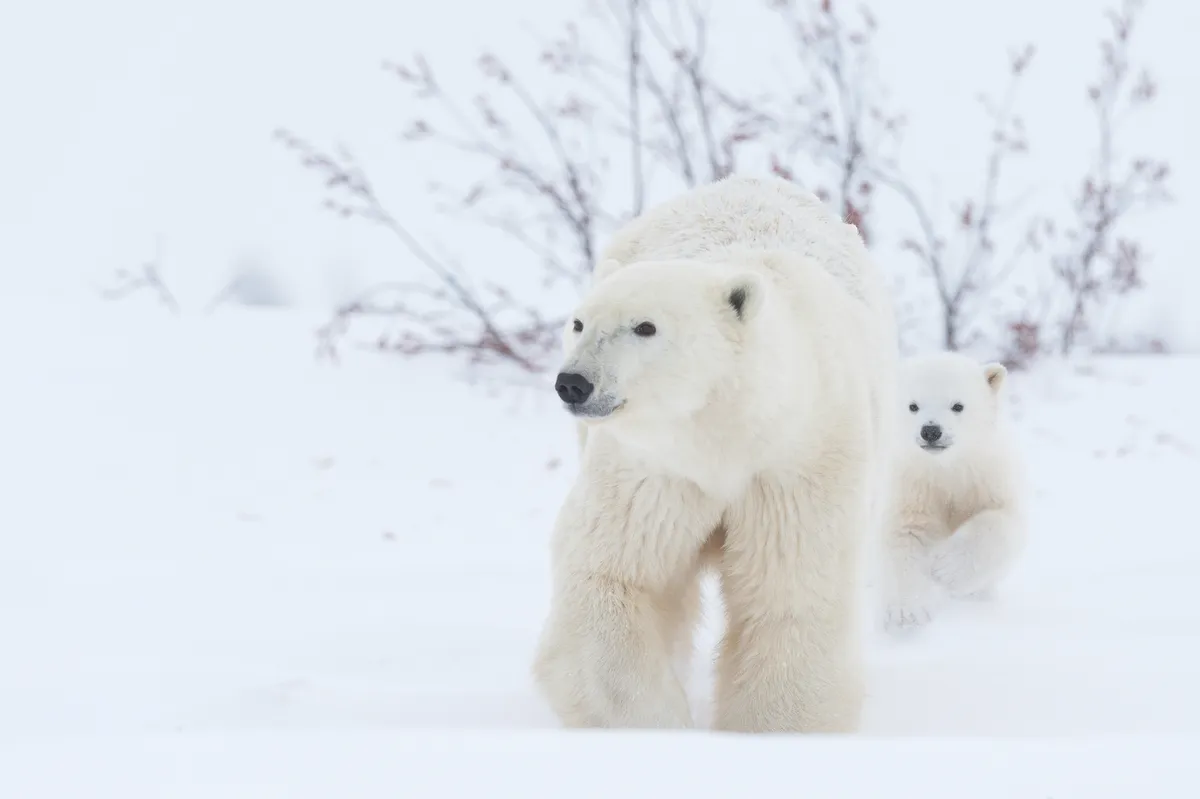
As global temperatures rise, the future of this snowy kingdom remains uncertain. Sharing photographs and stories of the animals that call it home is key to raising awareness of the importance of conserving the region. As Daisy explains:
"As conservation photographers, it is our duty to capture the beauty of places and species at risk and raise awareness through the universal power of the images we capture.
"While science provides the data necessary to explain issues and propose solutions, photography symbolizes these issues. Science is the brain, while photography is the heart. We need both to reach people’s hearts and minds in order to move them to action. For Nature, and for us."




